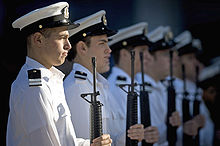A midshipman is an officer of the lowest rank, in the Royal Navy, United States Navy, and many Commonwealth navies. Commonwealth countries which use the rank include Canada, Australia, Bangladesh, Namibia, New Zealand, South Africa, India, Pakistan, Singapore, Sri Lanka, and Kenya.
The Submarine Warfare Insignia are worn by qualified submariners.
Officer Cadet is a rank held by military cadets during their training to become commissioned officers. In the United Kingdom, the rank is also used by members of University Royal Naval Units, University Officer Training Corps and University Air Squadron; however, these are not trainee officers with many not choosing a career in the armed forces.
The coxswain is the person in charge of a boat, particularly its navigation and steering. The etymology of the word gives a literal meaning of "boat servant" since it comes from cock, referring to the cockboat, a type of ship's boat, and swain, an Old English term derived from the Old Norse sveinn meaning boy or servant. In 1724, a "cockswain" was defined as "An officer of a ship who takes care of the cockboat, barge or shallop, with all its furniture, and is in readiness with his crew to man the boat on all occasions." When the term "cockboat" became obsolete, the title of coxswain as the person in charge of a ship's boat remained.
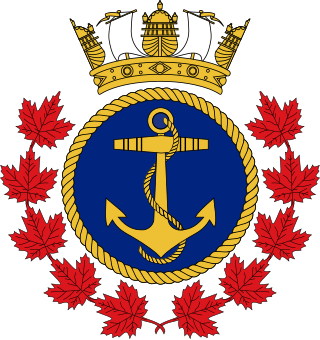
The Royal Canadian Sea Cadets is a Canadian national youth program sponsored by the Canadian Armed Forces and the civilian Navy League of Canada. Administered by the Canadian Forces, the program is funded through the Department of National Defence, with the civilian partner providing support in the local community. Cadets are not members of the Canadian Armed Forces.
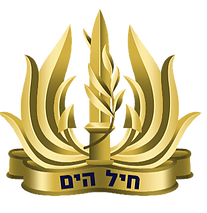
The Israeli Navy is the naval warfare service arm of the Israel Defense Forces, operating primarily in the Mediterranean Sea theater as well as the Gulf of Eilat and the Red Sea theater. The current commander in chief of the Israeli Navy is Aluf David Sa'ar Salama. The Israeli Navy is believed to be responsible for maintaining Israel's offshore nuclear second strike capability.
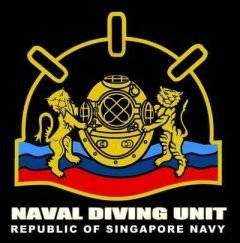
The Naval Diving Unit (NDU), also referred to as the Naval Divers, is the special forces formation of the Republic of Singapore Navy (RSN) responsible for conducting special operations from sea, air, and land. The formation is made up of six squadrons, specialising in explosive ordnance disposal, underwater demolition, maritime security operations, and combatant craft operations.
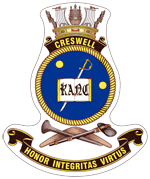
The Royal Australian Naval College (RANC), commonly known as HMAS Creswell, is the naval academy of the Royal Australian Navy (RAN). It consists of the RAN School of Survivability and Ship's Safety, Kalkara Flight, the Beecroft Weapons Range and an administrative support department. It is located between Jervis Bay Village and Greenpatch on the shores of Jervis Bay in the Jervis Bay Territory. Since 1915, the RANC has been the initial officer training establishment of the Royal Australian Navy.

A naval aviator is a commissioned officer or warrant officer qualified as a crewed aircraft pilot in the United States Navy or United States Marine Corps. United States Coast Guard crewed aircraft pilots are officially designated as "Coast Guard aviators", although they complete the same undergraduate flight training as Navy and Marine Corps crewed aircraft pilots, and are awarded the same aviation breast insignia.

The Reserve Officer Training Unit is a military programme that trains undergraduate students to be reserve officers for the Malaysian Armed Forces. Those who complete the training will be commissioned as officers in the Malaysian Armed Forces Reserve, either as Second lieutenants in the Territorial Army Regiment and the Royal Malaysian Air Force Volunteer Reserve, or as Acting Sub-lieutenants in the Royal Malaysian Navy Volunteer Reserve.
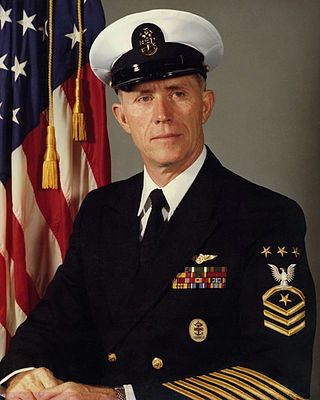
Billy C. Sanders is a retired senior sailor of the United States Navy who served as the fifth Master Chief Petty Officer of the Navy.

The United States Navy's Officer Candidate School provides initial training for officers of the line and select operational staff corps communities in the United States Navy. Along with United States Naval Academy (USNA) and Naval Reserve Officer Training Corps (NROTC), OCS is one of three principal sources of newly commissioned naval officers.

Zeev Almog, was the Commander In Chief (C.I.C.) of the Israeli Navy from 1979 to 1985. He was also General Manager of Israel Shipyards from 1986 to 1995.

The Hellenic Naval Cadets Academy is a military university and has the responsibility to educate and suitably train competent Naval Officers for the Hellenic Navy. Founded in 1845, the academy is one of the oldest educational institutions in Greece.
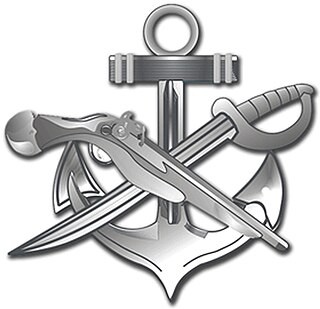
The Special Warfare Combatant-Craft Crewmen is a United States Naval Special Warfare Command team that operates and maintains small craft for special operations missions, particularly those in support of the U.S. Navy SEALs.

The Indian Naval Academy is the defence service training establishment for officer cadre of the Indian Naval Service and the Indian Coast Guard, located in Ezhimala, Kannur district, Kerala. Situated between Ezhimala hill and the Kavvayi backwaters, INA has a 7 kilometre beach front on the Arabian Sea. It conducts basic training for all officers inducted into the Indian Navy and Indian Coast Guard. It is Asia's largest, and the world's third-largest, naval academy.

The Combat Divers Groupment, abbreviated to GRUMEC, is a special operations and Counterterrorism unit of the Brazilian Navy. Their main attributions include tasks such as reconnaissance, sabotage, hostage rescue and the elimination of targets of strategic value in maritime and riverine environments.

The average member of the United States Navy's Sea, Air, Land Teams (SEALs) spends over a year in a series of formal training environments before being awarded the Special Warfare Operator Naval Rating and the Navy Enlisted Classification (NEC) O26A Combatant Swimmer (SEAL) or, in the case of commissioned naval officers, the designation 113X Special Warfare Officer. All Navy SEALs must attend and graduate from their rating's 24-week "A" School known as Basic Underwater Demolition/SEAL (BUD/S) school, a basic parachutist course and then the 26-week SEAL Qualification Training program.
The rank insignia of the federal armed forces of the Federal Republic of Germany indicate rank and branch of service in the German Army, German Air Force, or the German Navy.
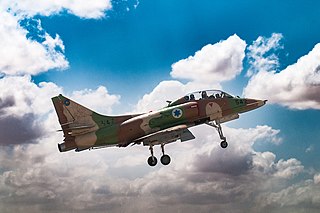
The Israeli Air Force Flight Academy trains aircrew to operate Israeli Air Force aircraft, qualifying fighter, helicopter and transport pilots as well as combat and transport navigators.
